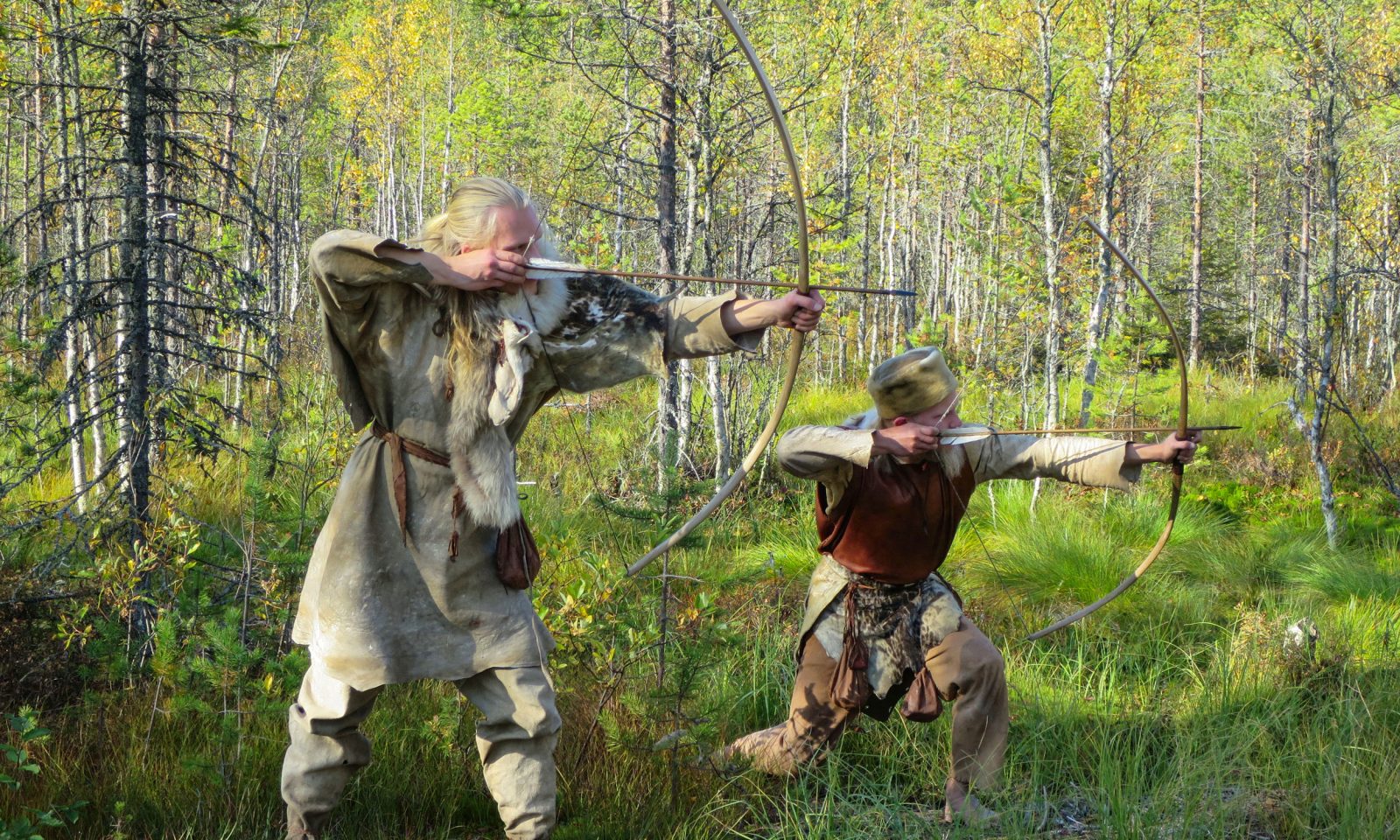The oldest dwellings in the Kierikki area are located near the Pahkakoski rapids on the Iijoki River, where the inhabitants arrived approximately 7,000 years ago, soon after the land emerged from the sea. The salmon that swam up the river and the abundant seal population attracted inhabitants, who gathered and hunted everything they needed in their immediate environment. They also knew how to make clay pottery, which was used to store food.
Relatively soon, however, the villages began to disperse and population declined. A major factor in the decline of village culture was probably the cooling climate.
For more fascinating stories about Stone Age life in Kierikki and artifacts found in the area, visit the archaeological exhibition at Kierikki.

A model of a Stone Age village has been constructed along the Iijoki River in Kierikki.
Kierikki was inhabited approximately 6,000 years ago at the latest. At the time, the average annual temperature was roughly two degrees Celsius higher than today. Thanks to efficient fishing methods, the area’s inhabitants caught more than they needed and population grew. Seal skins and blubber were valuable commodities and could be used to buy flint from the White Sea and amber jewelry from the Baltic.
A little over 5,000 years ago, the village communities of the Bothnian Sea coast were populous and well organized, as evidenced by their large-scale and systematic building projects, such as terraced dwellings and tens of meters long stone structures.
